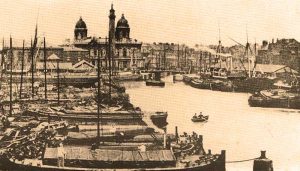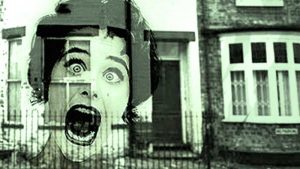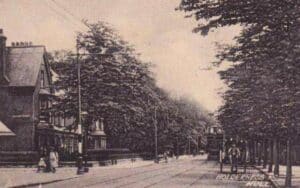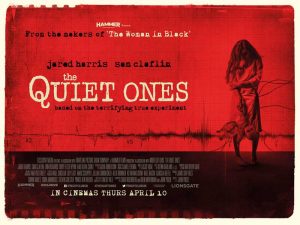MIKE COVELL explains how he used historical research to debunk claims behind a prominent haunting in Hull, East Yorkshire
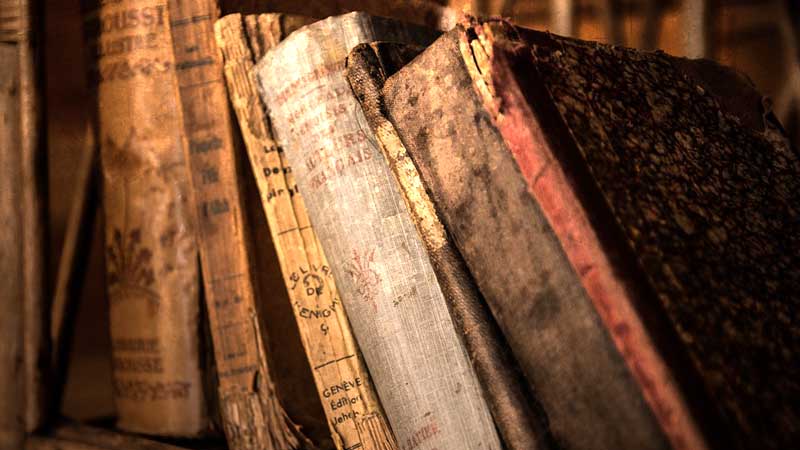
It was well over a decade ago when I first began researching the paranormal. My idea was simple. If ghosts are the spirits of dead people then somewhere in the history of these locations there must be historical evidence of those people residing at or dying in these properties.
A typical case study for me will include months of research, and I mean months! I start off by visiting the local studies libraries, then local archives, before hitting national archives.
Here in my hometown of Hull I visit the Hull History Centre, spending time in their archives and local studies, before heading to the Hull Heritage Centre, at Carnegie Library, before hitting the Hull Reference Library, then take a train to Beverley to the East Riding Archives. After that I consult the National Archives and British Library, then target the online historical sources.
A typical historical write up of a location will include entries from trade directories, polling books, burgess rolls, electoral rolls, census, births, marriages, deaths, baptism entries, rent books, bench books, post office books, old maps, old plans and many other sources. These provide a timeline of events, which are then cross referenced with historical newspapers, magazines, journals, books and periodicals.
Needless to say this thoroughness at over 160 locations across the UK has presented me with thousands of sources, hundreds of timelines, and actual historical evidence of historical events at allegedly haunted locations.
This work has seen me gain attention, and throughout the years I have appeared on Most Haunted, Most Haunted Live, Paranormal Lockdown and numerous radio shows, television shows, podcasts, and in newspapers and magazines around the world. I have advised on numerous “ghost hunts” and “Paranormal investigations” with groups across the UK and much further afield, and spent the night in abandoned castles, ruins, burial grounds, old churches, shops, pubs, clubs, and more, and worked with some of the biggest names in the industry, even lecturing for The Ghost Club, the oldest paranormal group in the world.
I first began researching De Grey Street in November 2015 when I had heard reports that it was quickly becoming known as the “Most Haunted House in Hull,” if not the British Isles! I looked at numerous events planned at the property and noticed that they were making some interesting claims.
It was written that the house was previously a mortuary, or morgue, a funeral parlour, a coffin makers, and a hostel. It was also claimed that the house had seen a tragic history including deaths, murder, and suicide, and that no one could live in the house. This sounded amazing, but I was told that researchers had tried to research it but could not find any information about it. So, with the stories in mind I headed for the multi-million pound Hull History Centre to research and investigate 39 De Grey Street.
De Grey Street runs from Beverley Road down to Newland Avenue, crossing Prince’s Road three quarters of the way down. The street is best known locally as being where the infamous Adelphi Club is situated.
Starting on any research I like to conduct a number of sources that help create a bigger picture of the property and its history. Trade Directories, census returns, polling books, electoral rolls, burgess rolls, historical newspapers, post office directories, telephone directories, birth records, death records, marriage records, marriage banns, christening records, military records, and many other sources. I also love using old maps, that show what was on the land previously. With that in mind I will tackle each story separately.
Claim: ‘It was a funeral parlour’
One of the claims made about the property is that it was formerly a funeral parlour, to be honest, as a local historian I get this theory on hundreds of Hull properties, fortunately, this can be researched and proven with a quick look through the available resources in the archives room at the Hull History Centre, a chilled climate controlled room that helps preserve the documents.
To the left of the desk stands a bookcase full of big red leather bound books, which have names and dates along the side. These are Trade Directories, which were issued annually between 1790’s and 1968. They feature street listings, surname listings and trade listings.
Immediately visiting the section for De Grey Street I logged the information before moving onto the next edition. I discovered that the earliest mention in the trade directories of Hull was Lee James, listed in the 1888 Atkinson’s Trade Directory of Hull as being an organ builder.
Searching through the years I came across no such record of a funeral parlour at the property with the organ building firm and later a furniture company operating from the house.
Claim: ‘It was a orphanage’
Another claim made about the property is that it was an orphanage. At the beginning of each trade directory there are numerous entries for buildings that cover schools, colleges, hospitals, prisons, public buildings, and orphanages. Not one entry for an orphanage was found for the entire run of De Grey Street.
This was further backed up by the alphabetical street directory entries, and cross referenced with the alphabetical trades listing.
Of course some people would argue that the property as an orphanage was missed out, so I headed over to the computers and checked out the British Newspaper’s Online website, a subscription based website that holds thousands of editions of thousands of British newspapers.
Several of these cover Hull and East Yorkshire, but a search failed to turn up any sign of an orphanage.
I then headed over to the vast collection of Hull newspapers on microfilm, but could find no record of such an orphanage.
During the Victorian period many Victorian Orphanages were in need of finance, these were helped along by subscription funds and fundraisers. These were a part of public record, you can, using the historical newspapers, go back hundreds of years and find out who gave how much money to which establishment. None of these records feature an orphanage on De Grey Street.
Claim: ‘It was a hostel’
The claim that the property was a hostel dates back a year, but again there was no evidence of this. From the late 1890’s the trade directories showed John Hardaker, a furniture remover, based at the house. He eventually passed the house down to his son, Herbert Hardaker, who is listed here in the early 1900’s. Herbert was also a furniture remover.
Cross referencing these names in the electoral rolls, which are produced annually, I also found the Hardaker’s residing at the property, but no sign of a hostel. The Hull History Centre also holds records of voters in records called “Electoral Rolls.”
These were records of people eligible to vote and were recorded annually. The electoral rolls showed that no such organization existed at the property, but it did give a clear picture of who lived there over the years. This will become important later on.
Claim: ‘There were suicides’
Suicides in the Hull district can be researched in three ways. The historical newspapers showed news of suicides, autopsies, and inquests. They featured names, addresses, ages, and other vital information about the properties, but no entries for 39 De Grey Street could be found in these newspapers covering news of suicides.
At the East Riding Archives, in Beverley, the coroner’s records can be viewed upon request; all you need is a name and a date. Similar records can be searched at the Hull History Centre with the same information.
We know, from the trade directories of Hull in the 1930’s, cross referenced with the electoral rolls of the same period, that the house had now moved into the hands of the Hart family.
Claim: ‘There were murders’
Researching murder cases is always a tough task, on account of the files being sent all over the place. In several cases the official files have vanished altogether. Luckily, we can bypass these files for the time being, and instead search the historical newspapers. During the time that De Grey Street has been present the city has been covered by numerous newspapers, giving overlapping coverage.
These newspapers included The Hull Packet, (1787-1886), Eastern Counties Herald (1838-1884), Eastern Morning News (1864-1929), Hull News (1852-1929), Hull Times (1857-1984), The Hull Daily News (1884-1930), The Hull Sentinel (1928-1963), and of course the Hull Daily Mail (1885-present).
None of these newspapers featured any such murders taking place in either the property, or on the street. Compare this to the lesser known murder cases in Hull, such as the Hentig family, which was covered locally and nationally, Emma Starkey in 1871, was covered locally and nationally, and Mary Jane Langley’s murder which had international press coverage.
The files of the Hull Watch Committee, at the Hull History Centre, coupled with the card index, and numerous books available through Hull Library services all fail to show a murder being committed here.
I didn’t stop there, as an historian I have access to thousands of historical newspaper archives locally, nationally and internationally, including historic local and regional newspapers, national newspapers such as historical editions of The Times, The Daily Mirror, and The Express, and unlimited access to American, Australian, and New Zealand newspaper archives. These archives have been invaluable when researching other local murder cases, as they catered for millions of ex-pats, who had moved from England abroad, and as such murder cases were always featured in these newspapers. Despite this none of these newspapers featured any such stories about a murder on De Grey Street.
Claim: ‘There were deaths’
With the claims of suicides and murders being ruled out it was time to tackle the deaths. Again these are registered, the property was there from 1881, when records were kept meticulously by the local authorities, the board of health, the Hull Corporation, the City Registrar, the Hull Watch and the Hull City Police Force. All of which are available at the Hull History Centre in the archives.
Furthermore, the obituaries in the old newspapers used to carry names and addresses of the deceased, searching these records of births, marriages, deaths and obituaries failed to turn up any such case of a death taking place at the property.
There were entries in the records, however, for marriages during the Hart family owning the property in the 1930’s, when Mr. Hart’s daughter, Marjorie Hart, married Charles Harold Blanchard in 1936, and Mr. Hart’s son, Leslie, married Kathleen Pullen in 1938.
Claim: ‘People refused to live there’
A wide range of records are available to researchers that enable them to research their property. I always start with the trade directories. I then cross reference with the electoral roll, burgess roll and polling books, all registers that required voters to be listed. I then cross reference these entries with the census, a nationwide headcount that took place every ten years, and then with birth, marriage and death records.
Finally I cross reference the names through the old Kingston Communications Telephone books, and then consult the newspapers.
With this in mind the records provide two or three entries per year for the house, sometimes more, and all of these records showed that the only time the property was vacant was in 1930, when the Hardaker family put the property up for sale, and the Hart family purchased it.
As mentioned earlier the names on the electoral roll were noted, and in the meantime, I began to make contact with those who lived there. I traced five individuals who resided at the property that I had found on the electoral rolls, and through emails, social media and telephone conversations, we talked about their time at the property. Not one of the individuals had experienced anything that one could consider paranormal.
Furthermore, I spoke with neighbours on the street who had resided there for many years, and none of them had heard of the property being haunted, then, using the electoral rolls and social media, I tracked down several former residents who had resided there and experienced nothing.
Claim: ‘The property cannot be researched’
One of the most interesting claims is that people have tried to research the property but failed to find any information. In researching the building I spent a morning at the Hull History Centre and an afternoon in various digital online archives. It gave me a timeline of people, events, names, businesses, and other information on the property, including a lovely description of the house when it was put up for sale in November 1930.
The sale was handled by W. N. Lewendon and Sons, and was listed as having an Entrance Passage, 2 Living Rooms, Kitchen, Tiled Dairy, 4 Bedrooms, Bathroom, and W.C., outside W.C., and the usual Domestic Offices.
The sale advertisement states that the Brick Building comprises a 4 stall stable, with a 2 storey furniture repository over, with a large open yard with double door cart entrances from De Grey Street and Maple Street.
It was described as being well built and is eminently suitable for a furniture remover, garage proprietor, builder or any other person requiring good yard or storage space, and will be sold with Vacant Possession.
Interestingly, when I approached a couple of groups who had visited the property and asked where they carried out their research they all answered that they “Googled the property.”
The Maps
Maps of the area show the development of De Grey Street from the 1880’s when the 1888 map shows the street but very few properties. The later maps show development as Hull began expanding past its boundaries to the north along Beverley Road.
It appears that the property has no sinister dark history, but it does have a history, you just have to know where to look, and what tools and services are there to help you.
For me, as an historian, the facts are equally, if not more, exciting, than the silly claims made up about the properties history, a property that has had real people, real events, and a real history that is part of the cities fabric.
Conclusion
With the history failing to support any of the erroneous claims that have been linked to the property, it is easy to see why people are upset and angry about paying extortionate prices to stay in what was essentially nothing more than a bog standard run of the mill late Victorian terraced house. A house like any other on the street, but, with clever marketing from those involved, now has an almost legendary status, but it is not the first time. In Hull we have had several properties such as this, which unscrupulous groups and individuals have created nonsensical false histories to support alleged activity. From the twine factory which it was claimed had been used to make ropes for public executions, to the shop on Ferensway, that it was claimed was a mortuary, to the tallow mill said to have been built on a plague pit.
One only has to go back through the actual historical records to ascertain the truth, to separate fact from fiction, and to avoid the pitfalls of what are essentially nothing more than tall tales.
MIKE COVELL is a local historian and author who was born, bred and is based in Kingston upon Hull. He currently runs Amazing Hull Tours, and is a published author with Creativia Publishing. He works freelance for the Hull Daily Mail, Grimsby Telegraph, Haunted Magazine, and Outer Limits Magazine and has appeared as an historical advisor on Most Haunted, Most Haunted Live and Paranormal Lockdown. He recently advised and researched on the BBC’s One Bomb, and has previously advised on Prospero Productions Prime Suspect Jack the Ripper, BBC’s From Whitechapel to Whitefriargate, Vice TV’s The Beast of Barmston Drain, and numerous news shows. He has lectured across the British Isles on topics such as history, WWII, “Jack the Ripper,” Ghosts, and true crime, and to date has published 16 books, with another 15 due!


